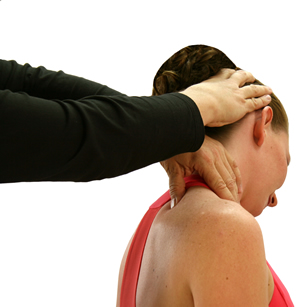About ART
Active Release Techniques (ART)
 Active Release Techniques (ART) has become one of most sought after soft-tissue treatments in the world today. ART is often your best bet for resolving chronic soft-tissue injuries.
Active Release Techniques (ART) has become one of most sought after soft-tissue treatments in the world today. ART is often your best bet for resolving chronic soft-tissue injuries.
“ART is a patented, advanced, movement-based massage system, which is extremely effective for accurately locating the cause of soft-tissue conditions and effectively resolving (or greatly improving) overuse and strain/sprain conditions.”
The definition of Active Release Techniques®(ART®) has changed and expanded over time as ART evolved. Essentially, ART is a non-invasive, hands-on, soft-tissue technique that simultaneously locates and breaks up scar tissue (which is the primary cause of pain, stiffness, weakness, numbness, and physical dysfunctions that are typically associated with soft-tissue injuries). ART combines motions performed by the patient with a hands-on technique that releases the adhesions between tissue layers. This process restores mobility and relative motion to the soft-tissue layers, increases circulatory function, and increases neurological function by breaking and releasing restrictive adhesions.
Active Release Techniques (ART) is classified as a multi- disciplinary procedure that is practiced by numerous practitioners from a wide range of medical professions and disciplines, including Chiropractors, Physiotherapists, Massage Therapists, Kinesiologists, Occupational Therapists, and Sports Physicians. Click on the following tabs for more information about ART.
What conditions can ART treat?
We use ART to treat a broad range of soft tissue injuries, including the following:
- Arthritis
- Achilles Tendonitis
- Ankle Injuries
- Back Pain/Injuries
- Bicepital Tendonitis
- Bunions
- Bursitis
- Carpal Tunnel Syndrome
- Compartment Syndrome (Chronic)
- De Quervains’s Tenosynovitis
- Dupuytren’s Contracture
- Foot Pain/Injury
- Frozen Shoulder or Adhesive Capsulitis
- Gait Imbalances
- Golfers/Tennis Elbow (Tendonitis)
- Golf Injuries
- Hammer Toes
- Hand Injuries
- Headaches
- Hip Pain
- Iliotibial Band Syndrome
- Impingement Syndromes
- Joint Dysfunction
- Knee Meniscus Injuries
- Knee Pain
- Leg Injuries
- Muscle Pulls or Strains
- Muscle Weakness
- Myofascitis
- Neck Pain
- Nerve Entrapment Syndromes
- Performance Care
- Plantar Fasciitis
- Post-surgical Scarring and Adhesions
- Repetitive Strain Injuries
- Rib Pain
- Rotator Cuff Syndrome
- Running Injuries
- Scar Tissue Formation
- Sciatica
- Shin Splints
- Shoulder Pain
- Sports Injuries
- Swimmers Shoulder
- Tendinitis
- Tennis Elbow
- Thoracic Outlet Syndrome
- Throwing Injuries
- TMJ
- Weight Lifting Injuries
- Whiplash (Hyperextension/hyperflexion injury)
- Wrist Injuries
What happens during an ART treatment?
 Every ART session is actually a combination of examination and treatment. The ART provider uses his or her hands to evaluate the texture, tension, movement and function of muscles, fascia, tendons, ligaments and nerves. Abnormal tissues are treated by combining precisely directed tension with very specific patient movements.
Every ART session is actually a combination of examination and treatment. The ART provider uses his or her hands to evaluate the texture, tension, movement and function of muscles, fascia, tendons, ligaments and nerves. Abnormal tissues are treated by combining precisely directed tension with very specific patient movements.
These treatment protocols – over 500 of them – are unique to ART. They allow providers to identify and correct the specific problems that are affecting each individual patient. ART is not a cookie-cutter approach.
Treatments take about 8-15 minutes for each area being treated. A condition may require two to ten visits before full functionality is restored. Manipulation if requested is frequently carried out in conjunction with ART to increase treatment effectiveness.
Whenever possible we have our patients perform active movements during the treatment process. Active motions stimulate neurological pathways in the spinal cord that help to reduce pain during treatment. Motion also helps to reproduce the stresses the patient will actually be under during normal active motion. Click on the following tabs for more information about ART Treatments.
